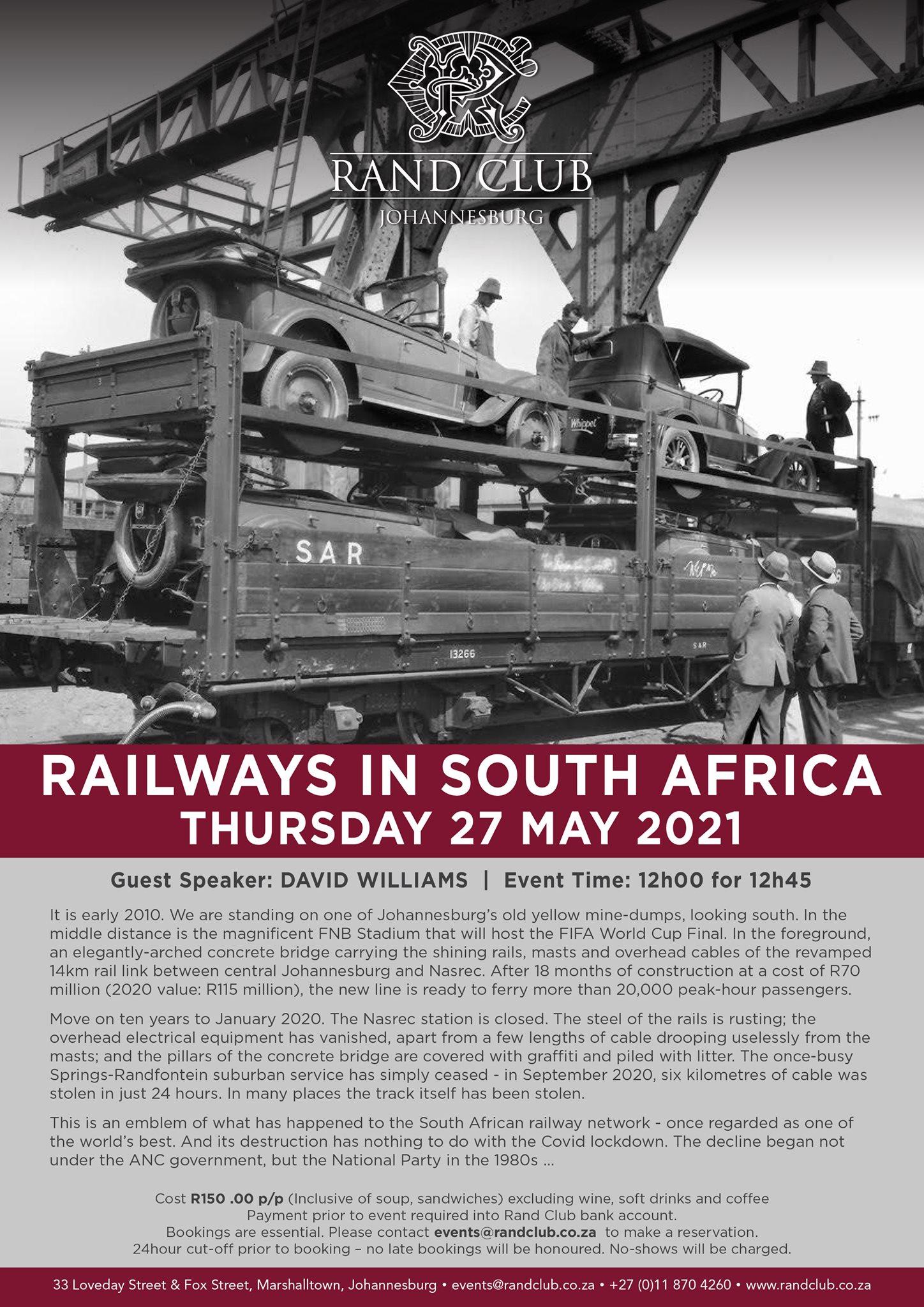It is early 2010. We are standing on one of Johannesburg’s old yellow mine-dumps, looking south. In the middle distance is the magnificent FNB Stadium that will host the FIFA World Cup Final. In the foreground, an elegantly-arched concrete bridge carrying the shining rails, masts and overhead cables of the revamped 14km rail link between central Johannesburg and Nasrec. After 18 months of construction at a cost of R70 million (2020 value: R115 million), the new line is ready to ferry more than 20,000 peak-hour passengers.
Move on ten years to January 2020. The Nasrec station is closed. The steel of the rails is rusting; the overhead electrical equipment has vanished, apart from a few lengths of cable drooping uselessly from the masts; and the pillars of the concrete bridge are covered with graffiti and piled with litter. The once-busy Springs-Randfontein suburban service has simply ceased - in September 2020, six kilometres of cable was stolen in just 24 hours. In many places the track itself has been stolen.
This is an emblem of what has happened to the South African railway network - once regarded as one of the world’s best. And its destruction has nothing to do with the Covid lockdown. The decline began not under the ANC government, but the National Party in the 1980s ...
- Cost R150 .00 p/p (Inclusive of soup, sandwiches) excluding drinks.
- Bookings are essential. Please contact events@randclub.co.za to make a booking
- Guest Speaker: David Williams
- Event Time: 12h00 for 12h45
- Venue: Rand Club
- Email events@randclub.co.za
Disclaimer: Any views expressed by individuals and organisations are their own and do not in any way represent the views of The Heritage Portal.

